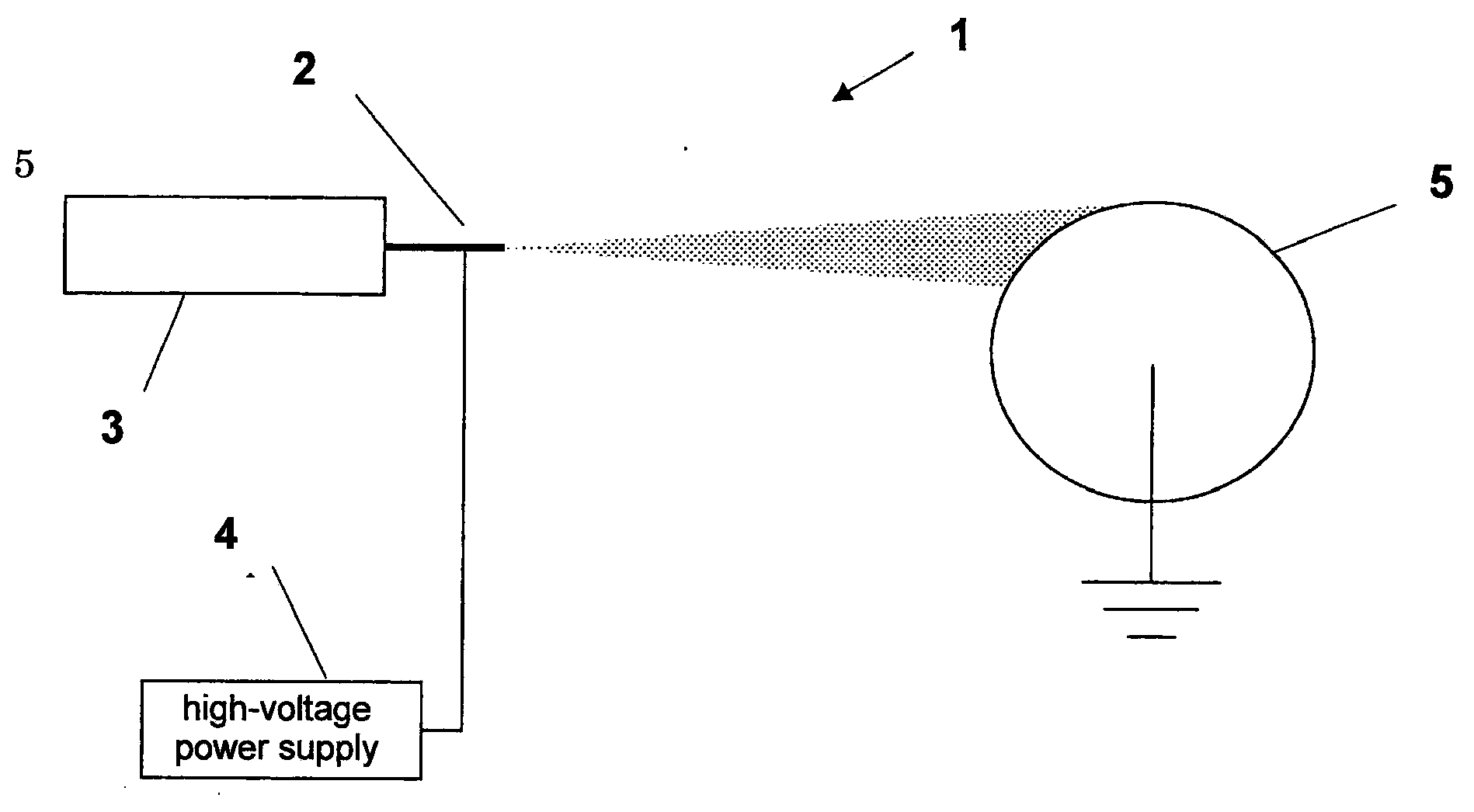Polyimide nonwoven fabric and process for production thereof
- Summary
- Abstract
- Description
- Claims
- Application Information
AI Technical Summary
Benefits of technology
Problems solved by technology
Method used
Image
Examples
reference example 1
Preparation of a Polyamic Acid Solution
[0074]A liquid-contactable portion in a reaction container equipped with a nitrogen introduction tube, a thermometer and a stirrer and the inside of the reaction contained with transport tube made of an austenite stainless steel, SUS316L, was filled with nitrogen gas. Subsequently, 223 mass parts of 5-amino-2-(p-aminophenyl)benzoxazole and 4448 mass parts of N,N-dimethylacetamide were added and completely dissolved, and then, 217 mass parts of pyromellitic dianhydride was added. The solution was stirred at 25° C. for 24 hours, resulting in producing a brown and viscous polyamic acid solution A1. The reduced viscosity (ηsp / C) of the polyamic acid solution A1 was 4.0 dl / g.
reference example 2
Preparation of a Polyamic Acid Solution
[0075]A liquid-contactable portion in a reaction container equipped with a nitrogen introduction tube, a thermometer and a stirrer and the inside of the reaction contained with transport tube made of an austenite stainless steel, SUS316L, was filled with nitrogen gas. Subsequently, 200 mass parts of diaminodiphenyl ether was put therein. Then, after 4202 mass parts of N-methyl-2-pyrrolidone was added and completely dissolved, 217 mass parts of pyromellitic dianhydride was added. The solution was stirred at 25° C. for 5 hours, resulting in producing a brown and viscous polyamic acid solution B. The reduced viscosity (ηsp / C) of the polyamic acid solution B was 3.7 dl / g.
reference example 3
Preparation of a Polyamic Acid Solution
[0076]A liquid-contactable portion in a reaction container equipped with a nitrogen introduction tube, a thermometer and a stirrer and the inside of the reaction contained with transport tube made of an austenite stainless steel, SUS316L, was filled with nitrogen gas. Subsequently, 108 mass parts of phenylenediamine was put therein. Then, after 4042 mass parts of N-methyl-2-pyrrolidone was added and completely dissolved, 292.5 mass parts of diphenyltetracarboxylic dianhydride was added. The solution was stirred at 25° C. for 12 hours, resulting in producing a brown and viscous polyamic acid solution C. The reduced viscosity (ηsp / C) of the polyamic acid solution C was 4.5 dl / g.
[0077](Producing of a Non-Woven Fabric)
[0078]The polyamic acid solutions indicated in the Reference Examples were discharged to the collection electrode 5 for collecting a fibrous material for 30 minutes by using the equipment shown in FIG. 1.
[0079]The obtained fiber bundl...
PUM
| Property | Measurement | Unit |
|---|---|---|
| Diameter | aaaaa | aaaaa |
| Diameter | aaaaa | aaaaa |
| Temperature coefficient of resistance | aaaaa | aaaaa |
Abstract
Description
Claims
Application Information
 Login to View More
Login to View More - R&D
- Intellectual Property
- Life Sciences
- Materials
- Tech Scout
- Unparalleled Data Quality
- Higher Quality Content
- 60% Fewer Hallucinations
Browse by: Latest US Patents, China's latest patents, Technical Efficacy Thesaurus, Application Domain, Technology Topic, Popular Technical Reports.
© 2025 PatSnap. All rights reserved.Legal|Privacy policy|Modern Slavery Act Transparency Statement|Sitemap|About US| Contact US: help@patsnap.com



